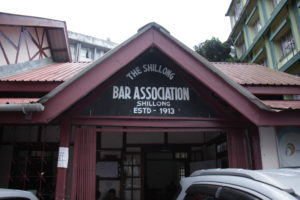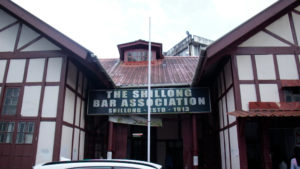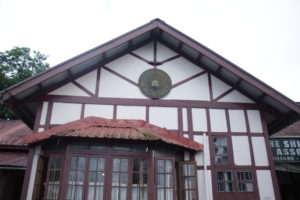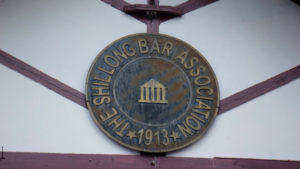 Having served as the headquarters of the Assam province in the early 1900s, Shillong was no longer a stranger to active socio-political, socio-economic and legal affairs where the basic knowledge of how the system works – with little or no regard to justice and equality, was already comprehended by a few well-read individuals.
Having served as the headquarters of the Assam province in the early 1900s, Shillong was no longer a stranger to active socio-political, socio-economic and legal affairs where the basic knowledge of how the system works – with little or no regard to justice and equality, was already comprehended by a few well-read individuals.
While education was one such weapon to counter the glaring discrimination meted out against the local people, a study of law was another tool to ensure justice prevailed.
 Thus, the need for a collective body of individuals well-versed with the law was felt – subsequently leading to the establishment of the Shillong Bar Association in the capital city in 1913. It is one of the oldest bars in the country.
Thus, the need for a collective body of individuals well-versed with the law was felt – subsequently leading to the establishment of the Shillong Bar Association in the capital city in 1913. It is one of the oldest bars in the country.
In this episode of Shillong Iconic Structures, we are featuring the Shillong Bar Association and its decades-old Assam-type structure located at Secretariat Hills, next to the District Courts and behind the Deputy Commissioner’s Office in Shillong.
There is never a day, except for Sundays and holidays, that its premises and halls are empty. Members of the black-coat tribe are always seen parading the streets – from the High Court to the district court and back to the Bar – never a dull or mundane way of life.
 Describing the Shillong Bar Association as the “Custodian of Civil Liberty”, Senior Advocate Bishnu Pada Dutta in his article titled “100 years of Shillong Bar Association” published in the 2015 Souvenir as part of the bar’s centenary celebration wrote: “1913 was an auspicious and eventful year when the bar association was inaugurated at Shillong with five members, though hearsay yet presumed to be correct.”
Describing the Shillong Bar Association as the “Custodian of Civil Liberty”, Senior Advocate Bishnu Pada Dutta in his article titled “100 years of Shillong Bar Association” published in the 2015 Souvenir as part of the bar’s centenary celebration wrote: “1913 was an auspicious and eventful year when the bar association was inaugurated at Shillong with five members, though hearsay yet presumed to be correct.”
Records indicated that the lawyers who first started their practice in Shillong included – Rai Saheb Hormu Roy Diengdoh, Kalisaday Bhattacharjee, Sarat Bhattacharjee, Nimai Biswas, Gurucharan Dhar, Mr Harris, Khirod Dutta, Mr Wassey and Khan Saheb Amjad Ali.
 The history of the Shillong Bar Association is interwoven with the country’s freedom movement. Due to the deliberate policy of the British government to keep Shillong away from participation in politics, it was difficult for the lawyers to join any political party or movement, yet some lawyers, who were discontented with the way things were panning out across the country, defied the rules and joined politics and subsequently the Quit India Movement.
The history of the Shillong Bar Association is interwoven with the country’s freedom movement. Due to the deliberate policy of the British government to keep Shillong away from participation in politics, it was difficult for the lawyers to join any political party or movement, yet some lawyers, who were discontented with the way things were panning out across the country, defied the rules and joined politics and subsequently the Quit India Movement.
Members of the bar like Charu Datta, Lala BK Dey, Ahmed Ali Khan, Rajani Goswami, Rajen Mahanta, PC Biswas, HR Das and Fakhruddin Ali Ahmed (who later on became the fifth President of India) were actively associated with the freedom movement and some of them were imprisoned during the 1930-31 and 1942 Quit India Movement.
(Watch the full version of the story only on our YouTube Channel @TheShillongTimes)



